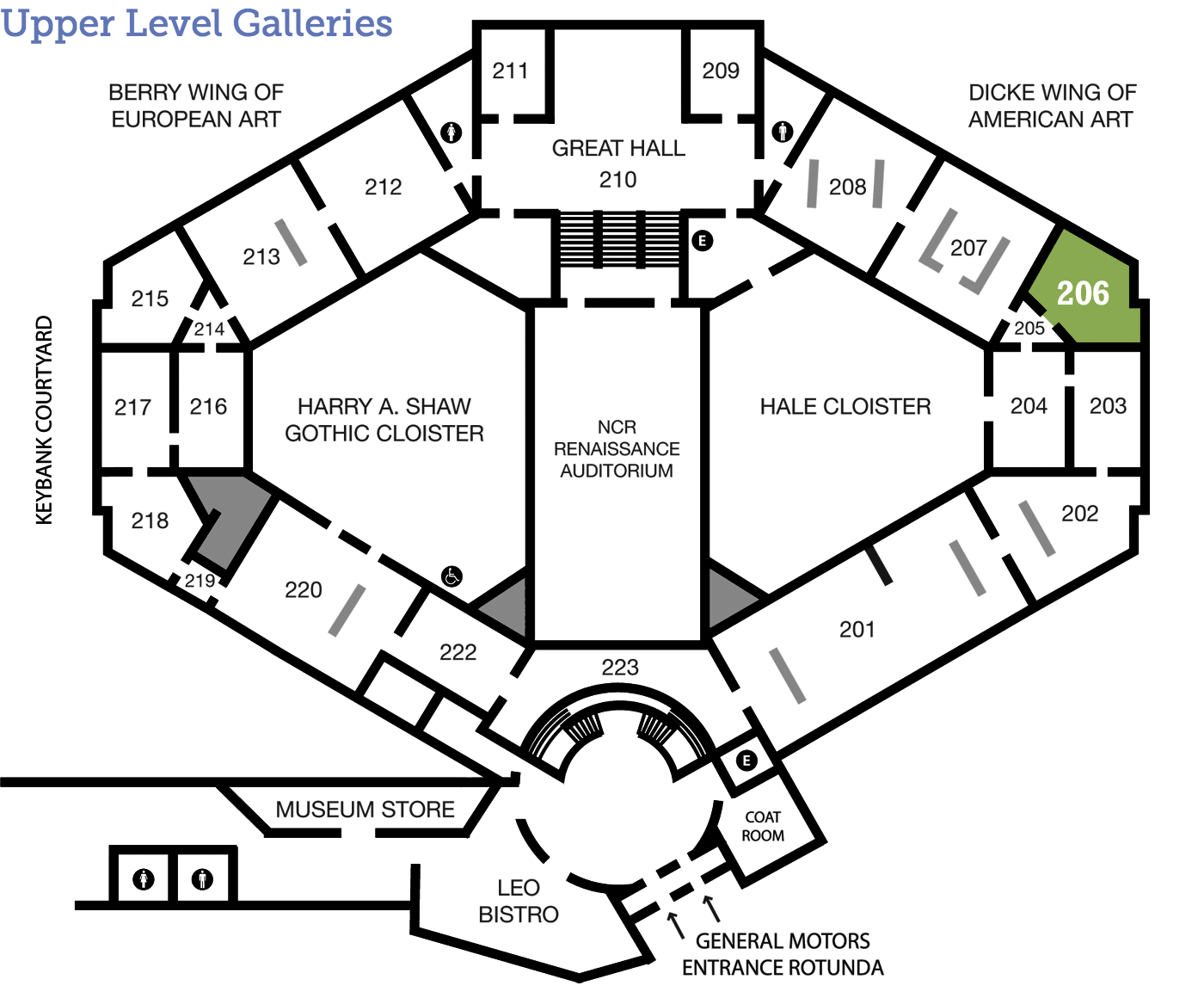
John Henry Twachtman
View of the Brush House, Cos Cob, Connecticut
(1853–1902)
American c. 1901 Oil on canvas 30 1/8 x 30 ¼ inches Gift of Mr. William P. Patterson 1988.66 206
False Impressions
Have you ever looked at something over a period of time and come to see it in a new way? Look closer at this late landscape painting by the American Impressionist painter John Henry Twachtman and extend your vision of how we see paintings and the world they show us.
A Day in the Life
Painters Do Not Just Paint
As he pursued a career as a painter, Twachtman did various things to support his family. These included farming, teaching at the Art Students League in New York, and contributing to a cyclorama of the Battle of Gettysburg. Twachtman also made illustrations for Scribner’s magazine and designed book covers. This lithograph poster, made to advertise the book The Damnation of Theron Ware, shows Twachtman’s keen sense of line, pattern, and color. Look at how the patterned background and words make the image appear flat as compared to the loose brushwork Twachtman employed in View of the Brush House, which is palpably atmospheric by comparison.
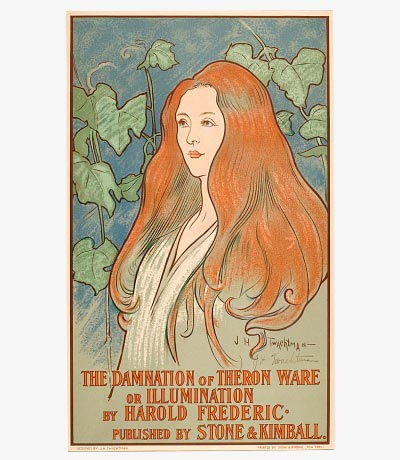
John Henry Twachtman (American, 1853–1902), The Damnation of Theron Ware or Illumination, 1896, color lithograph on paper, 21 x 13 inches. Smithsonian American Art Museum, Washington, D.C., museum purchase, 1977.72 (artwork in the public domain; photograph provided by the Smithsonian American Art Museum).
Tools and Techniques
Behind the Scenes
What is in a Name?
Have you ever wanted to change your name? Have you ever had to change your name? For many years this painting was called The Artist’s Home, or sometimes The Artist’s House. But in 1992 The Dayton Art Institute learned that the building in this painting is not Twachtman’s home in Greenwich, Connecticut. Instead, it is the Brush House, a ramshackle building that sat across from the Bush-Holley House in Cos Cob, the home of the Cos Cob Artist Colony in which Twachtman participated. You can see a different treatment of the same building in this watercolor painting by another member of the colony, Childe Hassam.
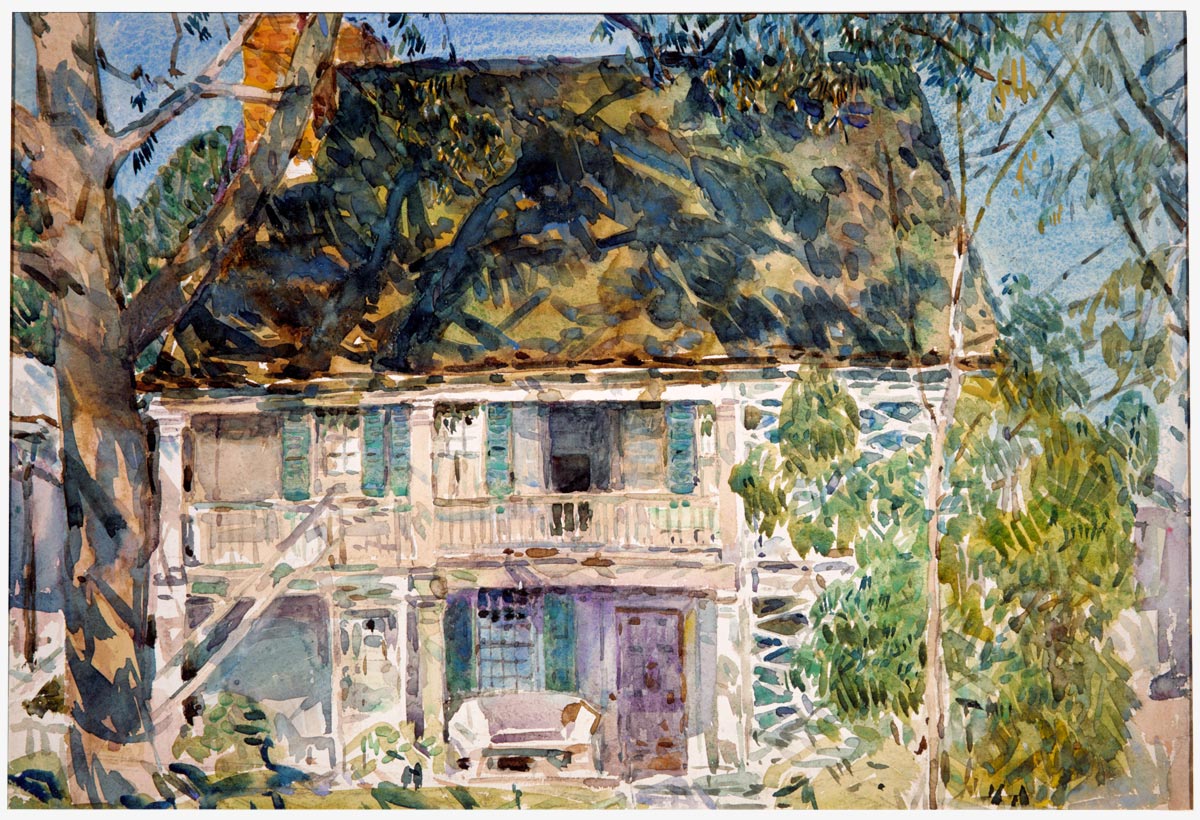
Childe Hassam (American, 1859–1935), The Brush House, 1916, watercolor and graphite on off-white wove paper, 15 5/16 x 22 5/16 inches. The Metropolitan Museum of Art, New York, Rogers Fund, 1917, 17.31.1 (artwork in the public domain; photograph provided by The Metropolitan Museum of Art, www.metmuseum.org).
And look at the red stamp in the lower, left corner of the painting. This is from the estate sale of Twachtman’s paintings after he died. In the estate sale catalog this painting is called First Leaves. We cannot be sure if this was Twachtman’s own title for the painting or something added by the estate agent. So, this painting has been called many things. Do the different names affect how you view the painting? How much do titles matter?
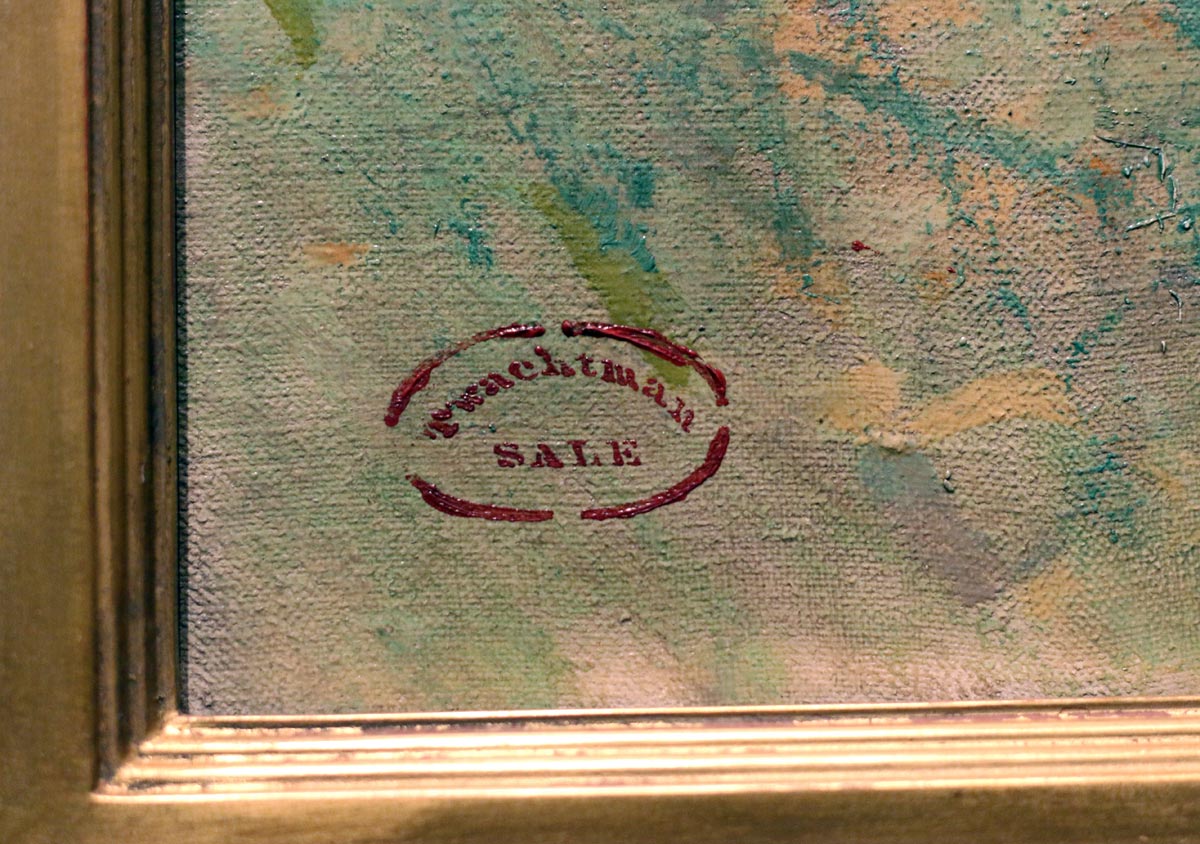
Detail
Look Closer
Just for Kids
Imagine!
This landscape was inspired by where John Henry Twachtman lived in Connecticut. Before moving to Connecticut, he grew up in Cincinnati. Would you want to visit Connecticut? Why or why not?
Artists express emotion while painting. What emotions might John Henry Twachtman show in this painting? In a group, come up with a list of different feeling words you feel when you look at the painting. After you made the list, take turns acting out the emotions one at a time. Use your face and body, but try not to make any noise.
Signs & Symbols
Dig Deeper
Arts Intersected
The Sculpture Speaks
Did You Know?
Expert Opinion
Look Around
Making a Good Impression
Compare Twachtman’s painting with Childe Hassam’s Early Morning Calm nearby. Twachtman and Hassam were founding members of the American Impressionist group The Ten American Painters, commonly known as The Ten. Frustrated by the lack of support in the Society of American Artists for new and original art by American painters, Twachtman, Hassam, J. Alden Weir, and seven others resigned from the organization in 1897 and formed their own group. Their work, influenced by French Impressionism, emphasized painting local places outdoors with a light palette of colors often selected to recreate atmospheric conditions. Notice in Twachtman’s painting the greater dissolution of form compared to Hassam’s painting; here you can see how differently two artists can adapt stylistic ideas in paintings created the same year.
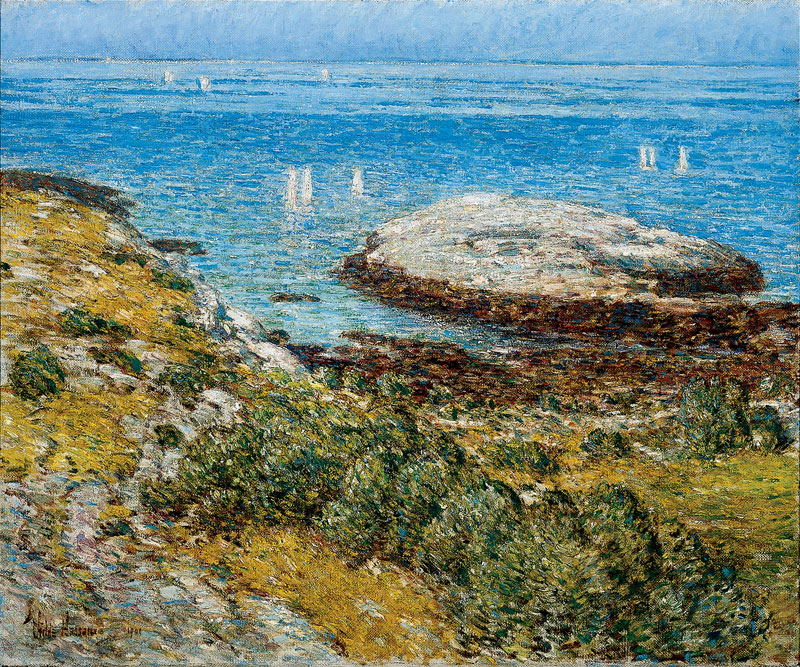
Childe Hassam (American, 1859–1935), Early Morning Calm, 1901, oil on canvas, 25 x 30 inches. Gift of Mrs. Harrie G. Carnell, 1942.3.
About the Artist
A Cincinnati Kid
Twachtman was born in Cincinnati to German immigrants. While he grew up in Over-the-Rhine, Twachtman would not stay in the Queen City, spending many years in Europe and eventually settling in Greenwich, Connecticut.
Quiz
Test your knowledge of Twachtman’s Cincinnati heritage. Which one of the following statements is true?
A. Twachtman briefly studied for the priesthood at Xavier University.
B. As a teenager Twachtman did detail work for Rookwood Pottery.
C. Twachtman was a student of the famous Cincinnati painter Frank Duveneck.
D. Twachtman referred to Cincinnati as, “The spring from which all my later paintings flowed.”
Further Reading: Lisa N. Peters, John Henry Twachtman: An American Impressionist (Atlanta: High Museum of Art, 1999).
Talk Back
Last Light
View of the Brush House is a painting from the end of Twachtman’s life. He had traveled to many places and experimented with many styles, searching for a form that captured his own sensibility in relation to the world. For example, compare View of Brush House with one of Twachtman’s early paintings, The Coast Scene, noting the differences in color, tone, and brushstrokes.
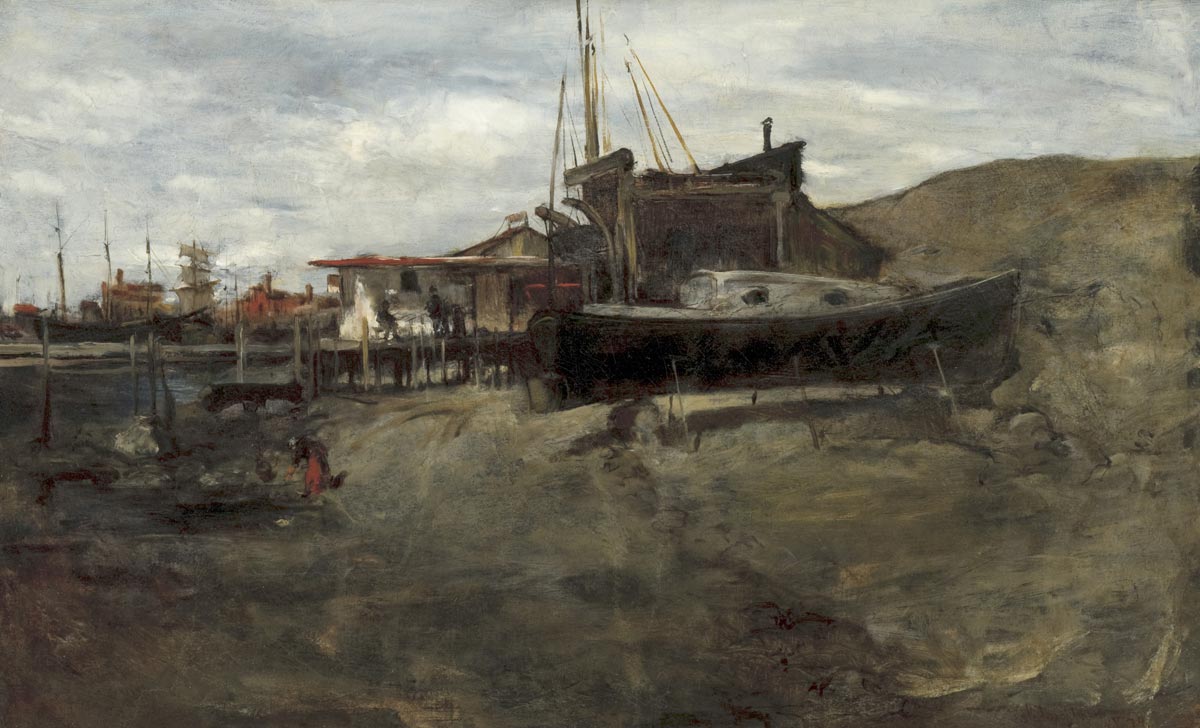
John Henry Twachtman (American, 1853–1902), The Coast Scene, 1879, oil on board, 22 x 36 inches. Reading Public Museum, Museum Purchase, 1929.181.1 (artwork in the public domain; photograph courtesy of the Reading Public Museum, Reading, Pennsylvania).
In his mature work, Twachtman simplified shapes in favor of color, and he achieved atmospheric effects with gestural brushstrokes. The combined result creates a tension between surface and depth that anticipates modernist abstraction. When you are in the modern galleries look for advances of Twachtman’s late style, perhaps in paintings such as Wolf Kahn’s Summer in Gallery 202 and Joan Mitchell’s Untitled in Gallery 201.
Is part of what makes something a masterpiece that fact that it is ahead of its time; that it goes beyond the status quo and advances our understanding of art in its many forms?

